Yesterday I had quite a treat. I got up a bit too early for me, and waited for Cassandra and Sonia at the Iglesia (church) at 7.30 in the morning. We hopped in a taxi, and made our way to the bus station,
to wait for Gusto to arrive, a man that works at IEPLAM, the place where we were going to go visit. Several men crowded around us, haggling, trying to get us to take the taxi to Pisac, instead of the bus, but
the bus we ended up taking. It is so funny, all the buses here have this picture of Jesus being beaten, usually surrounded by some gold trim, hanging from their windows. This bus had several, and I think they
were made with old CDs, too. There was also a big crack in the window (as their are in many of the buses), and a big sticker of Jesus was placed over the center of it. Down this windy roads, with the steep
cliff drops, I guess they really do depend on Jesus to get to their destinations!
We made our way to Pisac, a little town in the Sacred Valley, on the Urubamba river. We walked down a dirt road for about 20 minutes, until we came to this beautiful little farm, which grows medicinal plants.
Gusto showed us all the different plants they grow there, and pulled off leaves and flowers for us to smell, and explained their uses. they even had the three plants that the Incans used to mummify their dead, which are now used in facial creams to fight off wrinkles. Well, if it preserves the skin of the dead, I'm sure it preserves the skin of the living!
This organization, IEPLAM (www.geocities.com/ieplam only in spanish for now, but it has pictures), is great. Not only does it grow the tradition Incan plants organically, and export the products to Germany and the US for natural health, it also provides the local campesinos (poor country folk) with medicines that they can use, instead of having to rely on expensive western medicines. But, the main thing is so much more than that, because the main focus is not just to make money. They get the local communities involved, and set them up to grow these plants, which IEPLAM then orchestrates the international sale. The local people also sell their products at the markets. 60% of the money that comes back goes directly to the people. Which is really really great, because these people normally only make $30 a YEAR. They are too poor to send their kids to school (because here in Peru, school costs money), and live a pretty bare existence.
This has really caused quite a bit of positive change, as well. Normally, the campesiños (which are more indians than mestizos), have a VERY machismo society, more so than regular Peru, which is quite a feat.
Apparently, the women are seen as pretty lowly, and are beaten frequently. When this program is instituted in the communities, at first, it is only women who grow the crops, because the men believe it is "women's work". but then what happens? With time, it is the women that are bringing in all the money, and the attitude in the family changes. The woman's self-esteem raises, as she is the one who provides for her family, and also, they are very proud that their work is being exported to places like Germany and the US. Then the men start to think, well, maybe this work isn't so bad, and they begin to get involved as well.
So, when we go to our supermarket, and buy our little organic made in Peru moisturizer, we have no idea at the effect that we are creating in this world. To think, that your $5 means that you are helping to create a culture where women are seen as equals, and encourages pride in their heritage. I think that is pretty magnificent.
I also learned some other interesting things about the culture. For instance, the native religion, from the times of the Incans, is still alive and well. In this religion, there are three worlds, the upper world
which is related to the condor, the earthly level, which is related to the Puma, and the lower level, which is under the earth, which is related to the serpent. Well, in these communities, there is a lot of sickness, especially with the children. When some people came in to help, they told them they needed a sewage system, and set one up, with the pipes going in the ground. When they came back 6 months later, the children were still sick, because nobody was using the sewage system. Why? Because they couldn't put their human waste in the lower world, it was totally against their beliefs. Another way that shows you it is important to understand the culture that you are trying to help.
Did you know, that here in Peru, they don't need to use western contraception, because they have a local plant that the women take to make sure that they don't get pregnant? Apparently, it is pretty effective too, as long as you harvest it at the right time!
Well, I really enjoyed this day, and am very happy about the work that IEPLAM is doing. I even offered to help do their website in English! So, that will be a little project for me this summer, and a great way to continue to work on my Spanish.
Okidoki, adios!
Jillian
to wait for Gusto to arrive, a man that works at IEPLAM, the place where we were going to go visit. Several men crowded around us, haggling, trying to get us to take the taxi to Pisac, instead of the bus, but
the bus we ended up taking. It is so funny, all the buses here have this picture of Jesus being beaten, usually surrounded by some gold trim, hanging from their windows. This bus had several, and I think they
were made with old CDs, too. There was also a big crack in the window (as their are in many of the buses), and a big sticker of Jesus was placed over the center of it. Down this windy roads, with the steep
cliff drops, I guess they really do depend on Jesus to get to their destinations!
We made our way to Pisac, a little town in the Sacred Valley, on the Urubamba river. We walked down a dirt road for about 20 minutes, until we came to this beautiful little farm, which grows medicinal plants.
Gusto showed us all the different plants they grow there, and pulled off leaves and flowers for us to smell, and explained their uses. they even had the three plants that the Incans used to mummify their dead, which are now used in facial creams to fight off wrinkles. Well, if it preserves the skin of the dead, I'm sure it preserves the skin of the living!
This organization, IEPLAM (www.geocities.com/ieplam only in spanish for now, but it has pictures), is great. Not only does it grow the tradition Incan plants organically, and export the products to Germany and the US for natural health, it also provides the local campesinos (poor country folk) with medicines that they can use, instead of having to rely on expensive western medicines. But, the main thing is so much more than that, because the main focus is not just to make money. They get the local communities involved, and set them up to grow these plants, which IEPLAM then orchestrates the international sale. The local people also sell their products at the markets. 60% of the money that comes back goes directly to the people. Which is really really great, because these people normally only make $30 a YEAR. They are too poor to send their kids to school (because here in Peru, school costs money), and live a pretty bare existence.
This has really caused quite a bit of positive change, as well. Normally, the campesiños (which are more indians than mestizos), have a VERY machismo society, more so than regular Peru, which is quite a feat.
Apparently, the women are seen as pretty lowly, and are beaten frequently. When this program is instituted in the communities, at first, it is only women who grow the crops, because the men believe it is "women's work". but then what happens? With time, it is the women that are bringing in all the money, and the attitude in the family changes. The woman's self-esteem raises, as she is the one who provides for her family, and also, they are very proud that their work is being exported to places like Germany and the US. Then the men start to think, well, maybe this work isn't so bad, and they begin to get involved as well.
So, when we go to our supermarket, and buy our little organic made in Peru moisturizer, we have no idea at the effect that we are creating in this world. To think, that your $5 means that you are helping to create a culture where women are seen as equals, and encourages pride in their heritage. I think that is pretty magnificent.
I also learned some other interesting things about the culture. For instance, the native religion, from the times of the Incans, is still alive and well. In this religion, there are three worlds, the upper world
which is related to the condor, the earthly level, which is related to the Puma, and the lower level, which is under the earth, which is related to the serpent. Well, in these communities, there is a lot of sickness, especially with the children. When some people came in to help, they told them they needed a sewage system, and set one up, with the pipes going in the ground. When they came back 6 months later, the children were still sick, because nobody was using the sewage system. Why? Because they couldn't put their human waste in the lower world, it was totally against their beliefs. Another way that shows you it is important to understand the culture that you are trying to help.
Did you know, that here in Peru, they don't need to use western contraception, because they have a local plant that the women take to make sure that they don't get pregnant? Apparently, it is pretty effective too, as long as you harvest it at the right time!
Well, I really enjoyed this day, and am very happy about the work that IEPLAM is doing. I even offered to help do their website in English! So, that will be a little project for me this summer, and a great way to continue to work on my Spanish.
Okidoki, adios!
Jillian
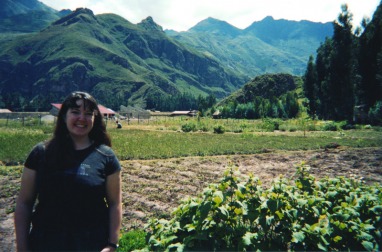
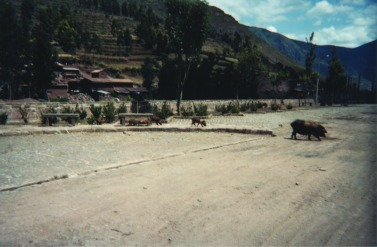

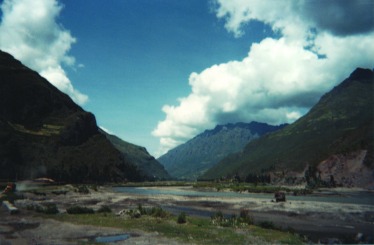
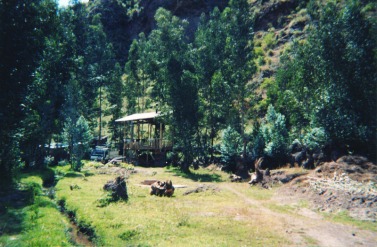
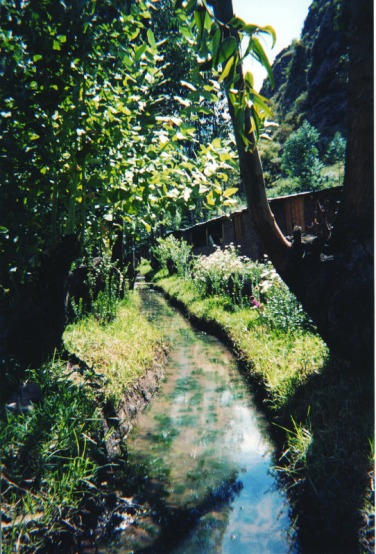
 RSS Feed
RSS Feed